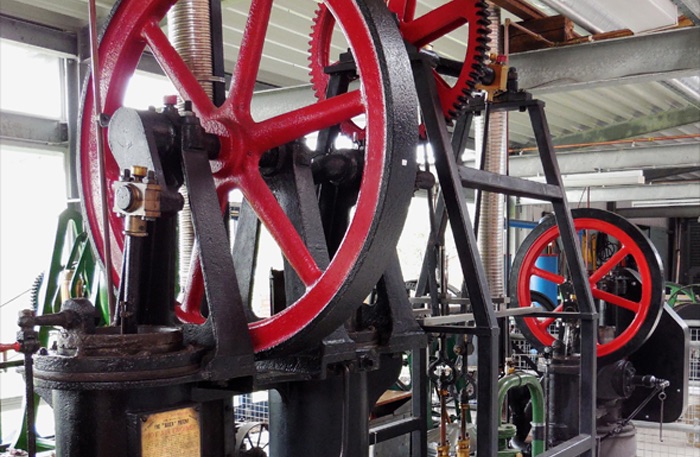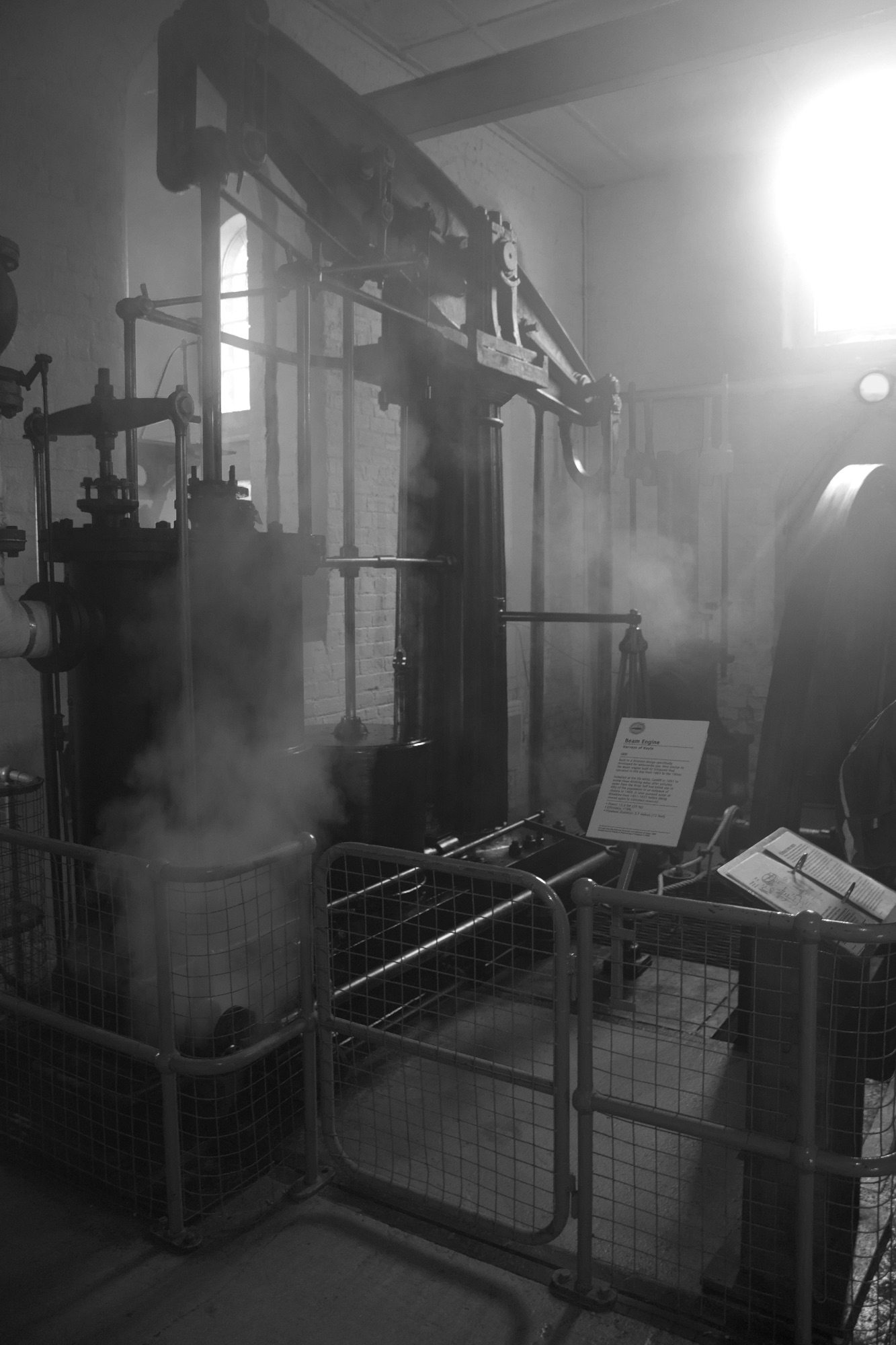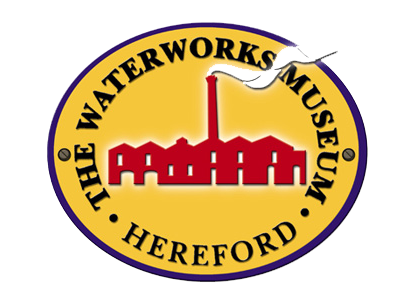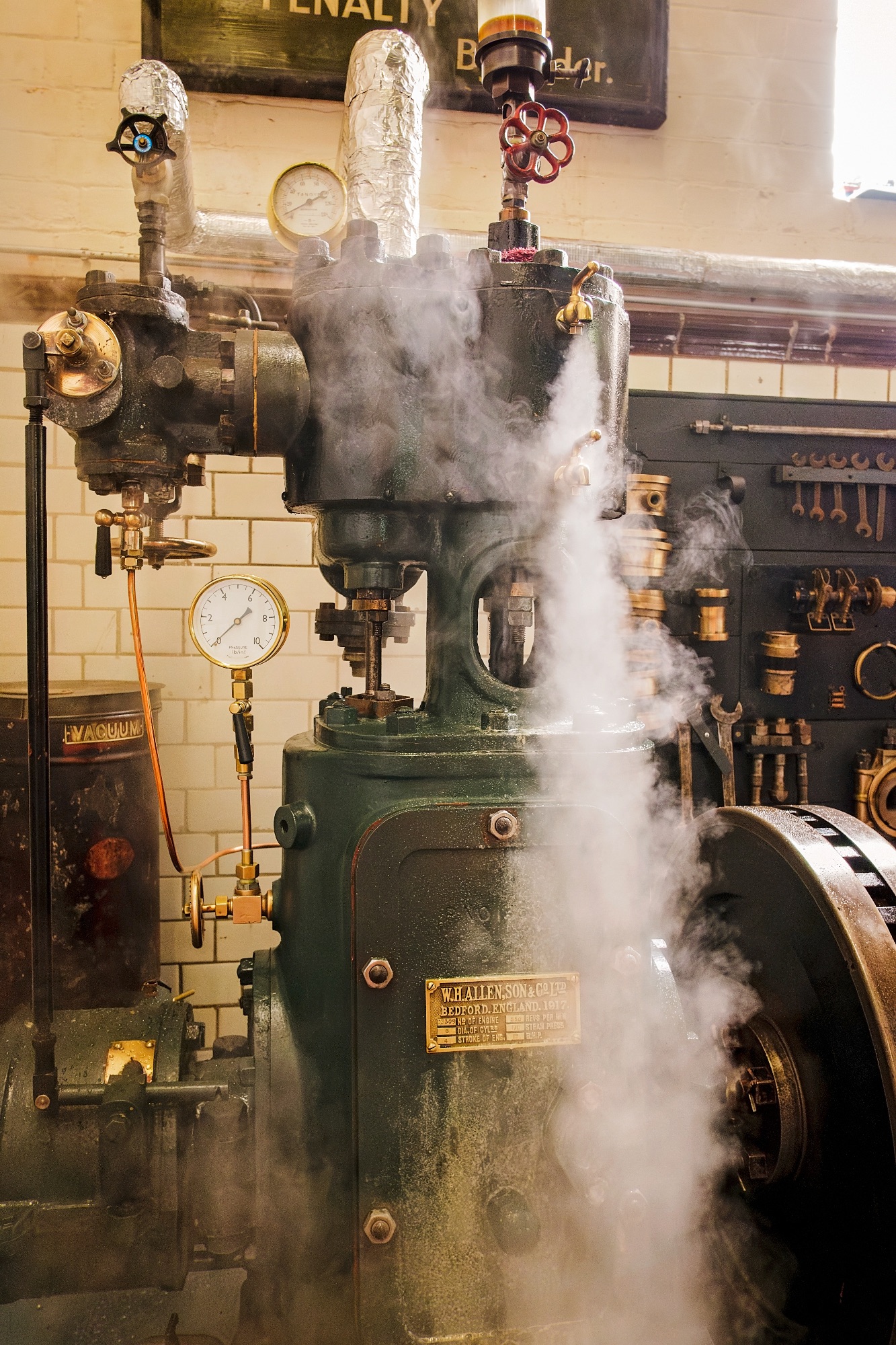The Museum exhibits
yesterday and today
The collection primarily relates to drinking water supply in Herefordshire and neighbouring counties, but also includes items from Wales and other parts of the UK to represent the development of drinking water supply, which were otherwise likely to be irretrievably lost. The collection includes the oldest triple expansion steam engine working in Britain plus historic beam, gas and diesel engines.
Building on a collection of hot-air engines used in the water industry, the museum has gained a reputation as a repository of knowledge and as being at the forefront in the public display and interpretation for these early devices that produced mechanical work from heat, which were essential for raising water for drinking and irrigation.
The museum houses a unique collection of working industrial artefacts.
With possibly the widest chronological range of working water-pumping devices in Britain, our exhibits span from 1850 to 2000, whilst authentic working replicas cover some of the earliest water-raising devices of the Greek and Roman periods. Virtually all the working engines and pumps are amongst the last remaining examples on public display.

Collection Timeline
The breadth of the collection is illustrated in the timeline of the main exhibits on display and any future expansion will be directed towards completing aspects of the museum’s historic story.
Our collection into context
Expanding our collection is an on-going project and subject to funding being available and where we have a particular interest in:
- the mid to late Victorian period and the early years of the 20th Century
- water industry instrumentation
- artefacts linked to Herefordshire
- protecting the industrial heritage and knowledge of water supply
Water on Tap
Our 'Water on Tap' exhibit developed in partnership with Dŵr Cymru Welsh Water explains how floating debris is filtered by screens at the water intake on the riverbank before being lifted by large pumps to the modern water treatment works on Broomy Hill.
Look out for our Operating Days when our exhibits will be working in all their glory








